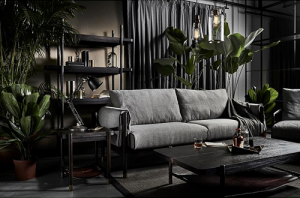Digitalising Your Business: Creating the Online Retail Experience
So you’ve got a quality product, lovingly crafted by skilled artisans out of quality materials. Now, how do you reach your customers? The pandemic has spurred furniture retailers all over the world to tackle building their online store counterparts overnight. What considerations need to be made when scaling this challenge?
A good online platform may look seamlessly easy to navigate, but behind this ease is a plethora of considerations that need to be made regarding both the front and back end of the site.
The Nuts and Bolts
On the front end, how easy is it for a customer to search the product catalogue and make a purchase? Is the website mobile-friendly? If there is a virtual showroom, how intuitive is it to navigate? How quickly can assistance be rendered to an online customer?
As for the back end, how well is the online inventory connected to that of the physical store, such that sales on both platforms are always updated? How smooth is fulfilment when a customer places an order, from payment to delivery? Pamela Ting, Director and Co-founder of local furniture brand SCENE SHANG says, “Just because you’ve posted something on the web doesn’t mean that your customers will be able to find it.” She shares that SCENE SHANG’s experience of setting up their web store was one where they had to constantly surf their own website to ensure that the user experience was intuitive, and that people were engaged enough to stay on the website for longer than a few seconds. “We needed to make sure navigation was consumer-friendly,” she says, and this process very much involves looking at how other e-commerce businesses were doing as well.

As Simple as Tic-Tech-Toe?
According to Furniture Today, one of the major trends dominating the furniture industry in 2021 is that of a digital transformation. “In order for brands, retailers and manufacturers to keep up with the fluctuating demand, they need to remain agile. By leveraging automation, AI and IoT, furniture manufacturers will be able to fully streamline their workflow and accelerate time to market.”
Gone are the days when one can afford the countless man hours to manually fill in paperwork converting quotations to sales orders to delivery orders and then to invoices. In an age of automation, technology can hasten the process, freeing up valuable time to put towards building other aspects of the business, such as marketing.
The proliferation of e-commerce platforms such as Shopify also makes it possible these days to cut to the chase and start selling one’s products without needing to know how to code. With sleek images and catchy product write-ups, one can put together an online store with the help of many easy-to-use templates out there.
To Market, to Market
But as competition stiffens online, brands must carefully consider their digital marketing strategy. Some brands have an in-house team dedicated towards creating content for their campaigns. Others such as Star Living and Ewins opt to partner with marketing agencies that can provide a streamlined approach towards their marketing campaign across physical and digital spheres.
“In terms of marketing online, there’s always something new to learn about. I actually meet up with our service provider once a month at least to talk about our marketing outreach through our online tools and platforms,” says Mark Yong, Executive Director of Ewins. “Almost every time we meet, there’s some new innovation in better customer targeting, which is really good. They’re constantly developing and innovating new tools.”
With the pervasiveness of social media, a well-organised social media campaign can do wonders to attract a following, as well as keep existing customers abreast of new product launches. Furthermore, a consistent brand aesthetic across social media platforms through thoughtful product styling and photography go a long way towards garnering a following. Websites like visual marketing platform Later provide no shortage of tips, making it easy to gain a foothold into the world of social media marketing.

One such tip is adding a blog to one’s webstore. By creating content that consumers find useful, brands can value-add to their customers’ online engagement with the brand. At the same time, these blogs boost traffic to the brand’s e-commerce platform through improving the site’s search engine optimisation (SEO) and connectivity to other websites.

A Signal Boost for the Brick and Mortar
The digital realm also serves as a means for brands to amplify the reach of their offline happenings, such as unique experiences that brands might organise in-store through partnerships with complementary brands.
For instance, ipse ipsa ipsum identified that local batik brand Baju by Oniatta has a similar aesthetic and espouses similar values. So they teamed up to cross-market each other’s brands to their respective followings.

Meanwhile, French luxury furniture brand Liaigre worked with art consultancy Chan Hori to create an art exhibition in their showroom, leveraging on the synergistic relationship between art and interiors to create a unique experience for their clientele.
If done right, an online store – coupled with a savvy digital marketing approach – can result in increased sales and provide more avenues to cultivate customer relationships.
SCENE SHANG reported that they saw their online sales forming 50% of their revenue since the onset of the pandemic, compared to 20% pre-pandemic. Given the evolving furniture shopping industry fuelled by the changing consumer habits, there is certainly much potential to be tapped in the online marketplace.
[By Michelle JN Lim]
28 March 2021










